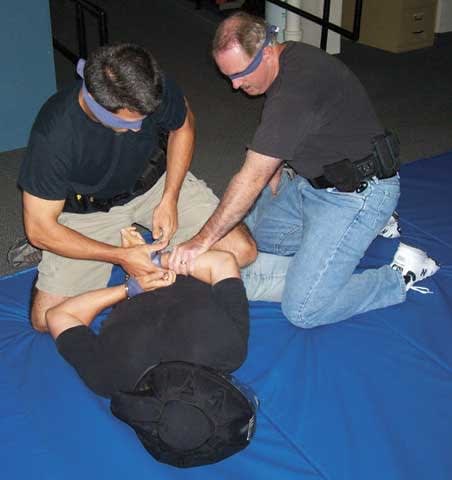This was followed by the two-man exercise where the resisting subject provided light to moderate physical resistance in the form of trying to prevent the officers from bringing his arms together for handcuffing. We began this training from a kneeling position to help prevent injuries while still achieving the benefits of the training. If an officer hit the ground from a lower position, he could brace his fall a little easier, particularly if one of his hands was used to control the resisting subject.
I made it clear that I would not grab for an officer's gun holster simulating an attempt to grab his duty weapon as this could change an officer's use of force option in a serious way. And as the "resisting subject," I would be the recipient of that increased force.
The program went well. Without the use of their eyes, officers were still able to maneuver and bring a subject under control, which was a training objective. It was also valuable as it helped officers gain a better appreciation of what to expect if they lose their sight while still having to complete a job task. As officers will likely react under stress in actual use-of-force situations as they were trained, this type of instruction can be vital for their survival. Also, having the confidence that they can work their way through this type of situation, officers may be less likely to panic when confronted with reduced vision or loss of sight.
Develop Other Drills
The no-sight training provided to our officers was a good introduction and allows for further or expanded exercises of a similar nature. A simple exercise, such as standing blindfolded and then turning to face an opponent who is moving around you, can be helpful. By listening for the actions of the subject and feeling his movement off the ground, you can at least position yourself for counter strikes if the subject moves in on you.












